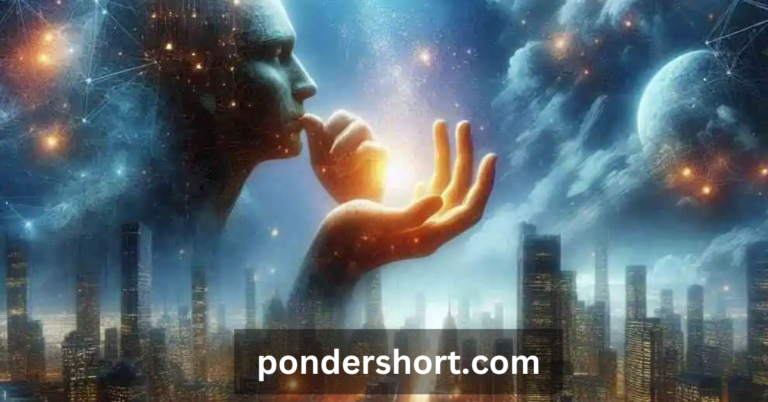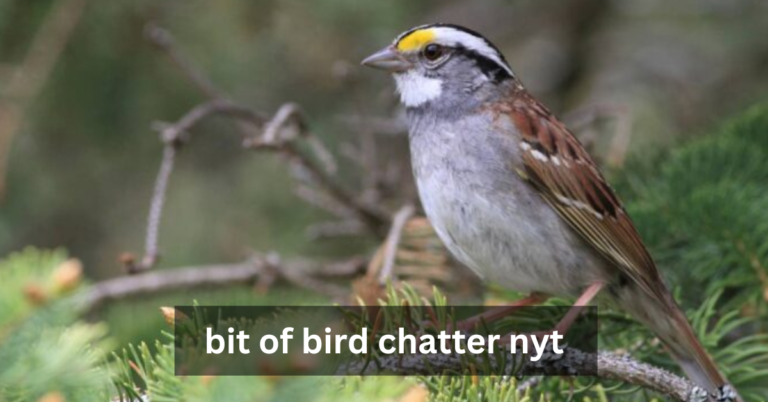Exploring the Magic of Drageanimations: The Future of Dragon
Drageanimations refer to the stunning world of animated dragons in various forms of media, such as films, video games, and TV series. These animations bring mythical creatures like dragons to life using advanced techniques like 3D modeling, motion capture, and CGI animation, making them a significant part of fantasy storytelling.
These animations bring to life mythical creatures through powerful visual storytelling, utilizing advanced technologies like 3D rendering, motion capture, and game engines like Unreal Engine. Whether in movies, video games, or advertisements, dragon-themed animation has become a significant aspect of fantasy media, combining artistry with technological prowess to create memorable characters.
In the world of fantasy animation, dragons represent power, mystery, and magic. Their animated depictions are not just about stunning visuals; they also convey emotions, stories, and character development. From the fiery dragons of Western mythology to the serpentine Chinese dragons, each animated dragon carries unique symbolism and design. These creatures are often integral to the plots of epic tales, acting as antagonists, companions, or symbols of strength.
Several well-known examples showcase drageanimations in pop culture. The iconic How to Train Your Dragon film series introduced audiences to Toothless, a lovable dragon who embodies the spirit of adventure. Similarly, the Hobbit films and Skyrim video games feature dragons that are not just visual spectacles but also central to the stories, with lifelike movements and intricate designs powered by advanced animation technologies.
The Origins and Evolution of Dragon Animation
The history of dragon animation can be traced back to early 20th-century films and animated shorts. In many of these early depictions, dragons were stylized and often limited by the animation technologies of the time. Films like Disney’s Sleeping Beauty featured a dragon, but it was primarily a visual villain. Over time, as animation technology progressed, dragons began to take on more dynamic roles in stories, from fierce antagonists to noble companions.
The Growth of Digital and 3D Dragon Animation
The real transformation in dragon CGI animation came with the advent of digital and 3D animation software. Technologies like Blender, Maya, and ZBrush revolutionized how animators could design, model, and animate dragons. These tools allowed for greater detail in texture, movement, and realism, enabling animators to craft dragons that felt alive rather than static drawings.
A turning point in dragon animation came with How to Train Your Dragon (2010), which set new standards for dragon design and animation. The film’s dragons were not only visually captivating but also emotionally engaging, thanks to the use of cutting-edge technology that enhanced their lifelike movements. Unreal Engine played a critical role in pushing the boundaries of what’s possible with digital dragon animation, especially in the realm of interactive media like video games.
Technologies Powering Drageanimations
The tools used to create 3D dragon animation are among the most advanced in the animation industry. Blender is a popular open-source 3D creation suite that is often used by independent animators to model and animate dragons. With its comprehensive tools for modeling, texturing, and rendering, Blender allows for the creation of dragons that are both intricate and lifelike. Similarly, Maya is another highly regarded tool in the industry, known for its flexibility in handling complex character animation and intricate movements.
Motion capture (or mocap) technology is essential for animating dragons in a realistic manner. By capturing the movements of real actors or animals, animators can translate these movements to digital dragons in ways that appear natural. This technology helps animate dragons’ flying patterns, breathing, and other actions, ensuring they mimic the behavior of real animals. The use of motion capture is particularly prevalent in the game industry, with titles like Dragon Age and Skyrim utilizing mocap to create dragons that feel as though they inhabit a real, living world.
How Game Engines like Unreal Engine Bring Dragons to Life
Game engines like Unreal Engine have taken dragon CGI animation to the next level. Unreal Engine’s real-time rendering capabilities allow developers to create highly detailed dragons with impressive visual effects and seamless interactions within virtual worlds. This has become a game-changer, especially for creating interactive experiences in video games and virtual reality (VR) applications. The lifelike dragons in Skyrim and Final Fantasy are perfect examples of how game engines can make these creatures feel real.
Designing the Perfect Dragon for Animation
A crucial aspect of fantasy character design for dragons is understanding their anatomy. While dragons are mythical, designers must create a believable skeletal and muscular structure to ensure the dragon’s movement is fluid and natural. This involves studying real-world creatures like reptiles and birds to understand how limbs, wings, and tails function. Designers must also balance between realistic and stylized designs, ensuring that the dragon feels like a living creature while still maintaining the fantastical qualities that make it unique.
When it comes to dragon designs, animators often face the decision of making the dragon realistic or stylized. Realistic dragons are designed with attention to detail, focusing on scales, textures, and accurate anatomy. On the other hand, stylized dragons take artistic liberties, featuring exaggerated features or more abstract forms. Both approaches can be effective, depending on the tone and style of the project. For example, How to Train Your Dragon features stylized dragons with exaggerated features, while The Hobbit portrays dragons in a more realistic, menacing manner.
How Cultural Influence Shapes Dragon Animation (Western vs. Eastern Dragons)
Cultural influences play a significant role in shaping drageanimations. In Western mythology, dragons are typically depicted as fearsome, fire-breathing beasts, often representing chaos and destruction. These dragons often serve as antagonists in fantasy films and video games. In contrast, Eastern dragons, particularly those in Chinese mythology, are seen as symbols of prosperity, wisdom, and good fortune. The visual design of Chinese dragons in animated films tends to be more serpentine, with long, flowing bodies and fewer fierce features.
The Art of Animation: Bringing Dragons to Life
One of the core principles of animation is squash and stretch, a technique that adds life and weight to a character’s movements. This principle is crucial when animating dragons, especially when they take flight, land, or engage in combat. Timing is another vital element; it dictates the speed and fluidity of movement. For dragons, slow, deliberate movements convey power and majesty, while quick, sharp movements communicate agility and aggression.
Animators create dragon movements by first designing a set of basic poses and then refining them to ensure that the dragon’s actions are consistent with its personality and environment. For example, a Western dragon might have an imposing, heavy stride, while a Chinese dragon could have more fluid, graceful motions. Animators rely on a combination of traditional techniques and motion capture data to make the dragon’s actions as lifelike as possible.
The Role of Sound and Visual Effects in Dragon Animation
Sound design and visual effects (VFX) play an enormous role in bringing animated dragons to life. The sound of a dragon’s roar, the flapping of wings, or the crackling of fire all contribute to the overall experience. In combination with visual effects, like fire breathing or glowing eyes, these sounds elevate the realism and intensity of the dragon’s presence.
Drageanimations in Pop Culture and Entertainment
The How to Train Your Dragon franchise is one of the most influential works in dragon animation. The film series revolutionized how dragons were depicted in cinema, combining high-quality 3D rendering with rich storytelling. The character of Toothless became a beloved dragon, largely due to the stunning animation that made him feel like a living, breathing creature.
Dragons are a central theme in many video games, but none have brought them to life quite like Skyrim. In this open-world RPG, players interact with animated dragons that feature realistic movement, behavior, and combat. These dragons are powered by advanced AI and motion-capture technology, making them formidable opponents and allies within the game world.
Dragons in Cinema: From The Hobbit to Shrek
Films like The Hobbit and Shrek have showcased dragons in different ways, from the fearsome Smaug to the lovable Dragon from Shrek. These films highlight the versatility of drageanimations, showing how dragons can be both terrifying and endearing, depending on the story.
The Future of Drageanimations
With the advent of VR and AR technologies, dragon animation is entering a new era. Virtual reality dragons allow users to experience dragons in fully immersive environments, while augmented reality can bring dragons into the real world through mobile devices. These technologies promise to make drageanimations even more interactive and engaging.the world of drageanimations is poised for exciting new developments. VR experiences allow users to engage with dragons in immersive environments, bringing these creatures into interactive, 3D spaces where they can be seen from every angle and interacted with in real time. A good example of this is in VR gaming, where players can take part in dragon battles or even tame and train dragons in games like VR Dragon Games.
Similarly, augmented reality (AR) is making it possible to bring dragons into the real world through mobile devices. AR apps can project lifelike dragons into your living room or on city streets, making the fantasy feel tangible and real. This merging of physical and digital worlds is pushing the boundaries of how we interact with animated dragons in both entertainment and educational contexts.
Artificial Intelligence and Deep Learning: The Role in Dragon Animation
The future of drageanimations is also closely tied to the rise of artificial intelligence (AI) and deep learning technologies. As AI becomes more sophisticated, it has the potential to revolutionize the way animated dragons are created and behave. AI can be used to enhance the behavioral animation of dragons, making their actions more unpredictable and nuanced. For example, rather than animators manually programming every action, AI could allow dragons to make more complex decisions, like how they respond to stimuli or interact with other characters, creating a dynamic, ever-evolving experience.
Another key development in the future of drageanimations is the use of interactive storytelling, particularly in video games and choose-your-own-adventure narratives. In these formats, players can influence the plot and the dragons’ actions, creating a deeper connection to the characters. The role of dragons in these narratives will likely evolve to be even more user-driven, with dragons taking on more complex roles and offering multiple story arcs based on user decisions. Games like Dragon Age already feature dragons in pivotal roles, but as storytelling becomes more interactive, these creatures may be able to adapt in real-time to user choices, enhancing the storytelling experience.
Conclusion
Drageanimations represent one of the most exciting frontiers in modern animation, blending art, technology, and storytelling to create unforgettable experiences. Whether through the incredible visual effects of films like How to Train Your Dragon, the lifelike creatures in Skyrim, or the innovations of VR and AR, the world of dragons continues to captivate and inspire audiences. With advancements in AI, motion capture, and interactive media, the future holds endless possibilities for how dragons will continue to evolve in animation.
As technology progresses, dragons will not only be more realistic but also more interactive, dynamic, and engaging than ever before. From cinematic universes to gaming experiences and even virtual encounters, drageanimations are bound to remain a core part of the fantasy genre and digital entertainment for years to come. Their symbolic importance, mythological depth, and sheer visual appeal will ensure their lasting presence in both popular culture and cutting-edge technology.
Frequently Asked Questions
How are drageanimations created?
Creating drageanimations involves various tools such as Blender, Maya, and Unreal Engine. These software programs help in modeling, texturing, and animating dragons to create lifelike or stylized movements. Motion capture and 3D rendering are also key techniques used to achieve realistic dragon behavior.
What are the most popular drageanimations in media?
Some of the most iconic drageanimations include How to Train Your Dragon, The Hobbit, and video games like Skyrim and Dragon Age. These productions showcase dragons in beautifully animated environments, each with their unique characteristics and storytelling elements.
What makes drageanimations so appealing?
Drageanimations captivate audiences through their fantastical designs, lifelike movements, and the powerful symbolism of dragons in various cultures. Whether it’s the mighty Western dragons known for their fire-breathing or the serene Chinese dragons symbolizing prosperity, these animations spark imagination and wonder.
What is the future of drageanimations?
The future of drageanimations lies in virtual reality (VR), augmented reality (AR), and AI advancements. As technology progresses, we can expect even more interactive and immersive dragon animations, allowing viewers to experience these mythical creatures like never before in gaming and entertainment experiences.
Stay in touch to get more updates & alerts on Ancient-Artz! Thank you






